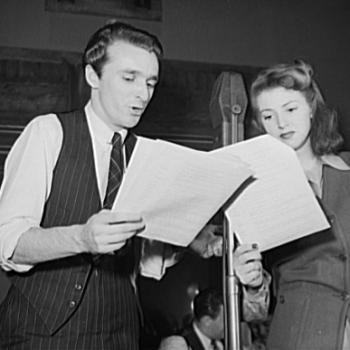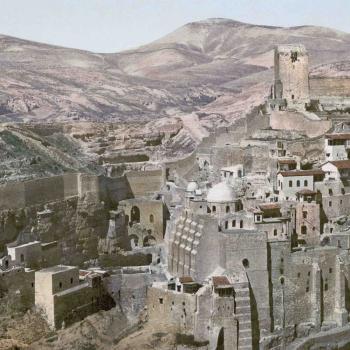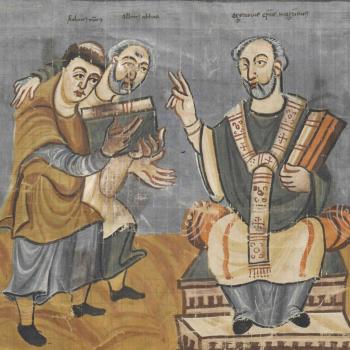And now, for something (not) completely different.
In recent months, I have been working on Old Testament and early Jewish history. As a total break, I thought, I would read a book on Aztec history and mythology, David Carrasco’s City of Sacrifice: The Aztec Empire and the Role of Violence in Civilization (1999). It’s a fine book, but for my purposes, it was a fool’s errand. Wherever I go, I keep finding new approaches to that ancient Jewish world.
Carrasco studies the role of mass human sacrifice in that Mexican culture, but he also focuses particularly on the role of the city – what the city is, and how it was defined by ritual and cosmology. The Aztecs saw their capital of Tenochtitlan as the axis mundi, the pole around which the world existed, and the channel uniting sacred and profane worlds. The city epitomized the world, it was the world in little, an idea familiar from the work of Mircea Eliade. Of itself, that is not an unusual concept, and the theme of localizing the universal in a particular place might well be hard wired in our consciousness. Many cultures do it: we think of Varanasi in India, or of Jerusalem itself.
Claude Lévi-Strauss famously quoted a Native American (Pawnee) who eloquently declared that “All sacred things must have their place.” The anthropologist continued, “Being in their place is what makes them sacred. If taken out of their place, even in thought, the entire order of the universe would be destroyed.”
As religions become literate and hierarchical, the great ritual sites become centers of scholarship and writing, where priests and scribes write ever more exalted hymns to the role and function of their mighty temples. We see the escalation:
The city is a microcosm of the universe –
The city is the center of the universe –
The city IS the universe!
And it is that Jerusalem theme that struck me in Carrasco’s work. Not, I hasten to add, because of any wild claims of human sacrifice in Palestine, but because of the ritual and cosmological nature of the city’s identity. Drawing on so many writers and scholars, including Italo Calvino and Clifford Geertz, he explores the idea of the City, and how it takes shape in our minds. For Eliade, of course, Jerusalem was one of the prime examples shaping his axis mundi theory, with Mount Zion as the sacred mountain par excellence.
Central to Carrasco’s theory is the concept of performance, which we can never stress too strongly in studying religion. The city is a performance in itself as well as an arena of performance. “Performance spaces and cultural performances did not just re-present city values but also functioned to re-generate and re-make the cities as meaningful landscapes. The ceremonies brought the city to life.” He writes of “the capacity of cities to perform culture, communicate cosmo-magical meanings, and direct processes of social, political and symbolic change and metamorphosis.”
In such a vision, Jerusalem occupied this central role because of the Temple itself, which was the earthly House of God, but also the whole city. The Temple itself was the site of complex performances, available to spectators to varying degrees. The frequent animal sacrifices united worshipers with the heavenly court, and the cosmic realities. Depending on the era, the Temple’s role was echoed and reinforced by that of the royal court, a linkage that was all the stronger during the Hasmonean era when the kings also occupied the role of High Priests. Factional struggles for control of the Temple apparatus inevitably raised sordid worldly rivalries to a cosmic dimension.
So many of the debates we hear in religious writings focus on the role of the Temple, as a setting for divine action on earth, and also of a blueprint for future ages. Even when they rejected the earthly Temple, as did many sectarians, it was because the Temple that did exist fell so badly short of the desired purity and perfection. (To take another book I have been referencing recently in other contexts, check out Solomon’s Temple: Myth and History, by Bill Hamblin and David Seely (Thames and Hudson 2007).
Apocalyptic writings often depict the role of the Temple itself, but also of the city and its geographical setting, often in remarkable and specific detail. In Zechariah 14, for instance, the prophet foretells that
The Mount of Olives shall be split in two from east to west by a very wide valley; so that one half of the Mount shall withdraw northward, and the other half southward. … The whole land shall be turned into a plain from Geba to Rimmon south of Jerusalem. But Jerusalem shall remain aloft upon its site from the Gate of Benjamin to the place of the former gate, to the Corner Gate, and from the Tower of Hanan′el to the king’s wine presses.
The Book of Revelation, of course, culminates with a vision of the Heavenly Jerusalem. Jerusalem was the sacred space in which human history would be performed.
You could write a good history of the changing shape and character of Judaism, Christianity and Islam by tracing how ideas of the Temple, and the larger city, have emerged and evolved over time.












